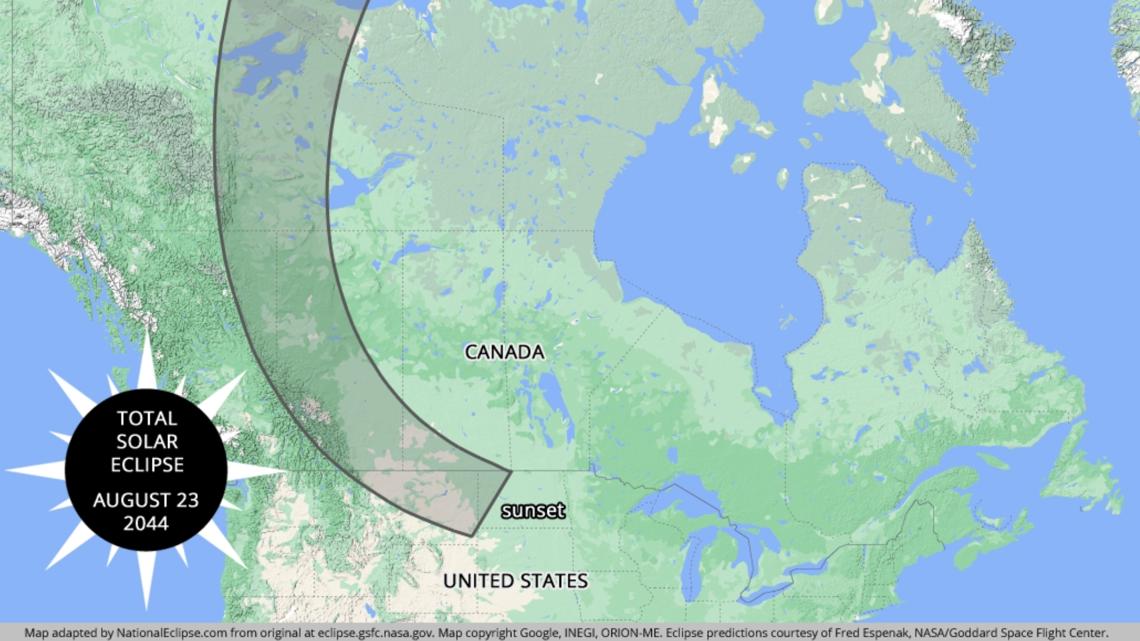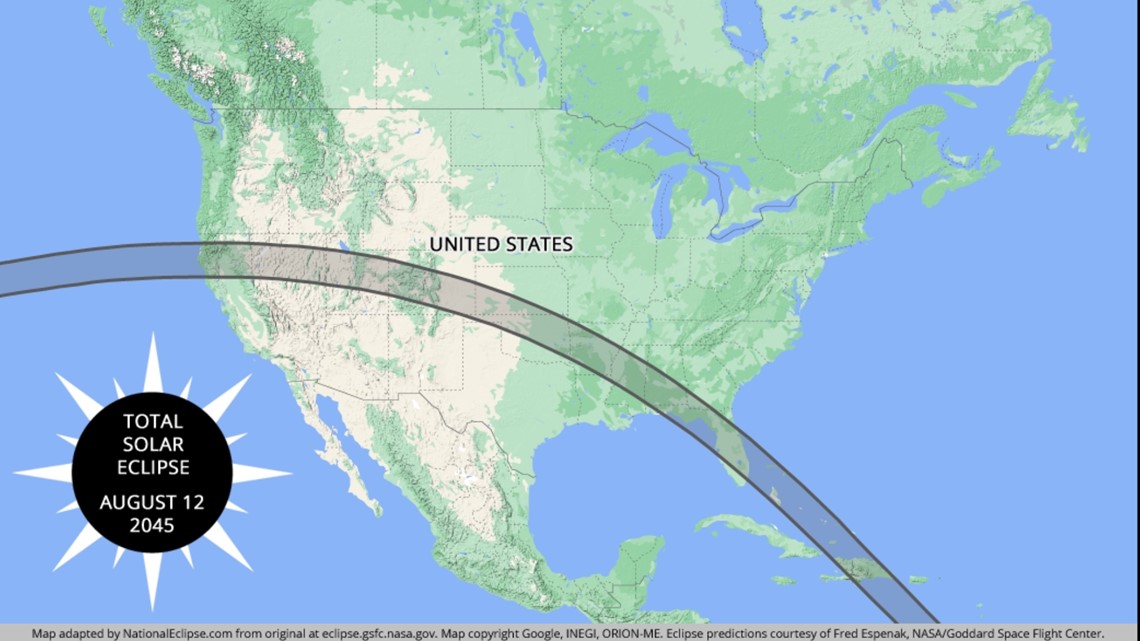HUNTSVILLE, Ala. — The 2024 solar eclipse has passed after millions of people across the United States got to see the sun partially or completely blocked by the moon. Although clouds obscured the view in some areas, the long and wide path of totality meant that eclipse glasses got a lot of use.
So, when is the next solar eclipse?
Two more solar eclipses are coming in 2044 and 2045. According to nationaleclipse.com, the August 23, 2044 solar eclipse path of totality will occur in Greenland, Canada, and three U.S. states: Montana, North Dakota, and South Dakota, and last for just over two minutes. Other states, mostly in the West and Midwest, will see a partial eclipse.
One year later, the August 12, 2045 solar eclipse will carve a path of totality across a much higher number of U.S. states, including California, Nevada, Utah, Colorado, New Mexico, Oklahoma, Kansas, Texas, Arkansas, Missouri, Mississippi, Louisiana, Alabama, Florida, and Georgia.
Alaska, Arizona, Connecticut, Delaware, Hawaii, Iowa, Idaho, Illinois, Indiana, Kentucky, Massachusetts, Maryland, Maine, Michigan, Minnesota, Montana, North Carolina, North Dakota, Nebraska, New Hampshire, New Jersey, New York, Ohio, Oregon, Pennsylvania, Rhode Island, South Carolina, South Dakota, Tennessee, Virginia, Vermont, Washington, Wisconsin, West Virginia, and Wyoming will see a partial eclipse.
PATH OF TOTALITY, 2044
(credit: nationaleclipse.com)


PATH OF TOTALITY, 2045
(credit: nationaleclipse.com)


What are the different types of solar eclipses?
A solar eclipse happens when the Moon passes directly between the Sun and Earth. When the Moon completely blocks the Sun, it is called a total solar eclipse. When the Moon only blocks part of the Sun, it is called a partial eclipse. An annular eclipse is s special type of partial eclipse that happens when the Moon blocks all of the Sun except for a small ring around the edge. Sometimes a solar eclipse can appear as an annular in some places and a total in others as the Moon's shadow moves across Earth's surface. This is known as a hybrid eclipse.
To learn more about the types of solar eclipses, please visit the NASA eclipse types page.
How long does a total solar eclipse last?
Total solar eclipses last anywhere from 10 seconds to about 7.5 minutes. In the span of 12,000 years from 4000 BCE to 8000 CE, the longest total solar eclipse will occur on July 16, 2186, and will last 7 minutes 29 seconds. Its path will sweep across Colombia, Venezuela, and Guyana. The shortest total solar eclipse happened on Feb. 3, 919 CE, and lasted just 9 seconds.

